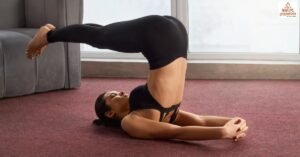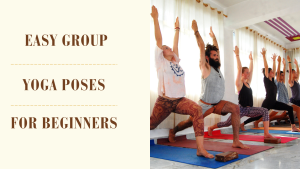Do you find yourself searching to let off some steam after a tiresome day? In Aatm Yogashala, we think that supine yoga poses may change and relax both the body and mind. If you are an experienced yogi or a visiting beginner our pleasant area is the ideal place to enjoy mellow poses and relaxing breathing, the principles of supine yoga practice. You are going to be prepared to take your practice to the next level and explore the ancient art of the spinal yoga poses. Join us at Aatm YogaShala.
Our programs are specifically tailored to help illuminate and give you strength on your journey towards wellness. Waste no more time, reserve your place in our next course and change your life with the inestimable value of yoga.
What are Supine Yoga Poses?
One of the pillars of relaxation and restorative practice is the poses of supine yoga. They assist the body and the mind to relax and get rid of the stress. These poses are performed in a lying position and are very good when one is a beginner and wants to do a light stretch after a working day.
These are poses which are able to re-align the spine and decompress it, loosen the chest and shoulder muscles and help the blood circulation. This pose, Supine Butterfly Legs-Up-the-Wall, and Supine Spinal Twist, are all part of your routine, and will leave you feeling very calm and refreshed.
Regular yoga of such mild postures can enhance sleep and well-being. Various supine poses work out and select those that suit the body and mind. Supine yoga can be used to increase self-care with regular consistency and mindfulness. Also make sure to take care and listen to what your body needs and consult a professional in case of necessity. Happy stretching!
Benefits of Supine Yoga Poses
- Promotes Relaxation:- Supine postures including Savasana enable the body to go into a profound resting position, alleviate stress, and relax.
- Enhances Digestive Health:- Most of the supine posts like Supta Matsyendrasana arouse the abdominal organs and enhance the digestive system.
- Strengthens the Back:- Setu Bandhasana- also known as the bridge pose, may make your muscles tighter at your back, as well as make you better your posture.
- Encourages Mindfulness:- The supine position provides a chance to the practitioners to relax and be more aware of the body and breath.
- Facilitates Healing:- The mellow feel of most of the supine will assist in healing of the body as well as offer therapeutic benefits to many of the ailments.
- Increases Circulation:- Inverted postures such as Viparita Karani promote the flow of blood to the heart and they also relieve the swelling of the legs.
Also Go Through:- 500 Hour Yoga Teacher Training in Rishikesh
Here’s the table with Supine yoga poses along with their benefits and ideal purposes:
| No. | Supine Yoga Pose | Benefits | Ideal for |
| 1 | Supta Baddha Konasana | Opens hips, stimulates abdominal organs | Relaxation |
| 2 | Supta Matsyendrasana | Increases spinal flexibility, aids digestion | Spine health |
| 3 | Viparita Karani | Relieves tired legs, calms nervous system | Recovery |
| 4 | Savasana | Promotes deep relaxation, reduces stress | Integration |
| 5 | Supta Padangusthasana | Stretches hamstrings, strengthens knees | Flexibility |
| 6 | Supta Virasana | Stretches the thighs and hips, aids digestion | Posture |
| 7 | Supta Parivartanasana | Stimulates internal organs, improves core strength | Core muscles |
| 8 | Ananda Balasana | Gently stretches the hips, thighs, and spine | Gentle stretch |
| 9 | Supta Tadasana | Lengthens the spine, relaxes the body | Spinal length |
| 10 | Setu Bandhasana | Strengthens back muscles, alleviates stress | Back strength |
| 11 | Halasana | Calms the brain, stimulates abdominal organs | Mental calm |
| 12 | Karnapidasana | Relieves stress and fatigue, therapeutic for back | Stress relief |
| 13 | Matsyasana | Stretches chest and neck, encourages deep breathing | Chest opening |
| 14 | Pavanamuktasana | Eases tension in the back, aids gastrointestinal comfort | Back relief |
| 15 | Uttanpadasana | Strengthens abdominal muscles, improves digestion | Core strength |
| 16 | Supta Garudasana | Releases lower back and hip tension | Hip flexibility |
| 17 | Chakravakasana | Improves mobility in the spine | Spinal health |
| 18 | Supta Trivikramasana | Stretches the leg muscles, balances nerves | Leg strength |
| 19 | Supta Balasana | Calms the nervous system, revitalizes the body | Nervous system |
| 20 | Jathara Parivartanasana | Enhances core and hip flexibility, detoxifies | Detoxification |
List Of 20 Explanation Supine Yoga Poses
Let’s explore the best supine yoga poses:-
1. Corpse Pose (Savasana)

The final relaxation pose is your Savasana which asks any practitioner to lie down on their back. Maintain a loose position of the legs and arms straight with the palms upwards. Close your eyes and inhale so that you can immerse yourself into a state of great stillness with your body and mind connecting.
2. Bridge Pose (Setu Bandhasana)

Bridge Pose is a back bending pose that may be both re-invigorating and rejuvenating. Bending your knees with your feet in contact with the floor, breathe to raise your hips to the sky with your hands behind you to help yourself.
3. Legs Up the Wall Pose (Viparita Karani)

Viparita Karani or Legs-Up-the-Wall is an inversion that stimulates the circulation and helps people relax. In order to do it you need to lie on your back with your legs raised to a 90-degree angle with your body lying against a wall.
4. Knee-to-Chest Pose (Apanasana)

Apanasana means using the knees one by one, racketing the knee towards the chest. Grasp the knee either on the shin or the knee. This mild abdominal pressure is useful to eliminate lower back pain and massage digestive organs.
Also read: 300 Hours Yoga Teacher Training And Benefits
5. Happy Baby Pose (Ananda Balasana)

This is a cunning gesture that asks you to be on your back, open your knees and hold the inner arches of your feet like an infant of great joy. It is such an excellent method of stretching your back and hips.
6. Reclining Bound Angle Pose (Supta Baddha Konasana)

Sit up crosslegged with feet close. Then roll over into Supta Baddha Konasana and the pose should provide a gentle stretching of the inner thighs and the groin.
7. Wind-Relieving Pose (Pavanamuktasana)

Wind-Relieving Pose is an extremely easy one-legged embrace to the breast. This position is involved in digestion, relieves gas and activates the ascending colon.
8. Supine Spinal Twist (Supta Matsyendrasana)

The seated spinal twist in the supine position Supta Matsyendrasana stretches the spine and relieves the tension in the back muscles. Let your breath breath in more and more rotation.
9. Supine Hand-to-Big-Toe Pose (Supta Padangusthasana)

In the position of lying on your back raise one leg and with your pinky fingers cling to the big toe. This stretch puts a stretch on the hamstring and the calf muscles to balance the nervous system in the implications of breathing.
10. Supine Pigeon Pose (Supta Kapotasana)

In Supta Kapotasana, one ankle over the other knee is crossed and the legs are pulled to the chest. This forward bends of the pigeon pose lengthens the outer hips and buttocks.
11. Supine Bound Angle Pose (Supta Baddha Konasana)

Prop your elbows on both sides and your belly with your hands coming in contact with the soles of your feet Supta Baddha Konasana provides a light-hearted stretch of the inner thighs and the groin.
12. Supine Twist (Supta Jathara Parivartanasana)
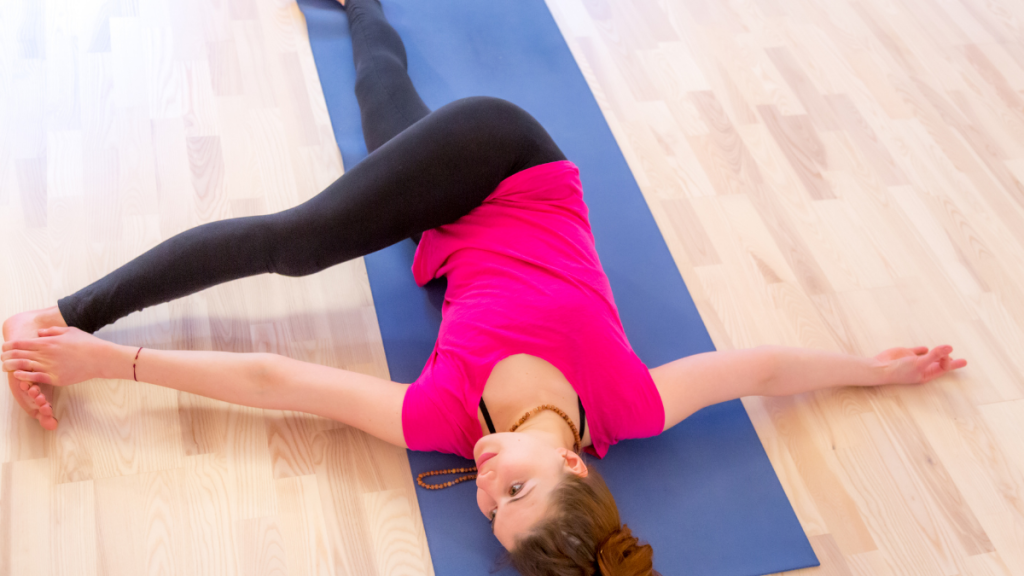
Start with your knees bent and feet on the mat flat. There, then bring both of the knees at the same side of the body maintaining the shoulders in contact with the ground and in this manner do Supta Jathara Parivartanasana. This position assists in spinal and back muscle tension.
13. Reclining Hero Pose (Supta Virasana)
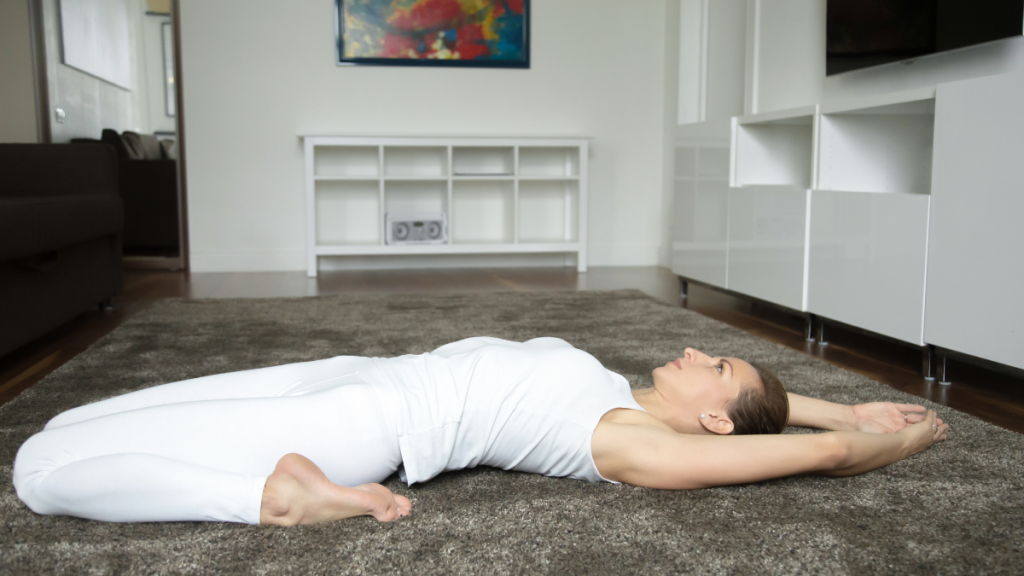
This position of the Hero begins as you lie with your feet firmly together, or with some cushion or bolster behind you to support you. The sitting position provides a profound stretch of the quadriceps and the anterior body.
14. Supine Extended Triangle Pose (Supta Trikonasana)
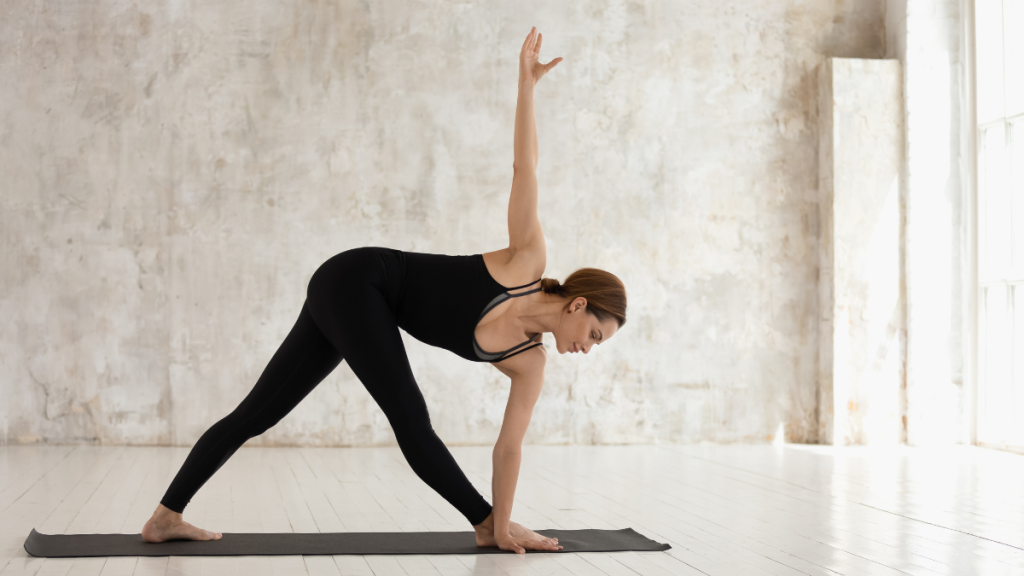
One arm should be directed against the back and the other hand should be used to direct the leg or foot to the ground. Supta Trikonasana gives a good twist to the spine, and it also stretches the hamstrings and calves.
15. Legs on the Chair Pose (Setu Bandha Sarvangasana)
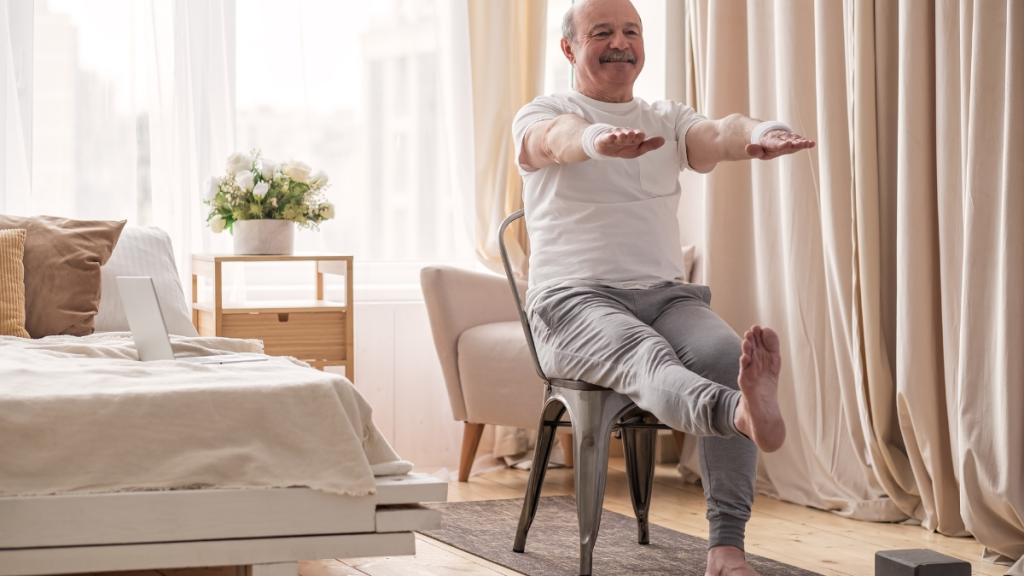
Similar to Bridge Pose with feet elevated on a chair, Setu Bandha Sarvangasana is a less challenging practice but their feet get to enjoy healthy blood circulation and back rest.
You May Also Like:- 10 Yoga Poses for Better Focus and Concentration
16. Supine Big Toe Pose (Supta Padangusthasana)
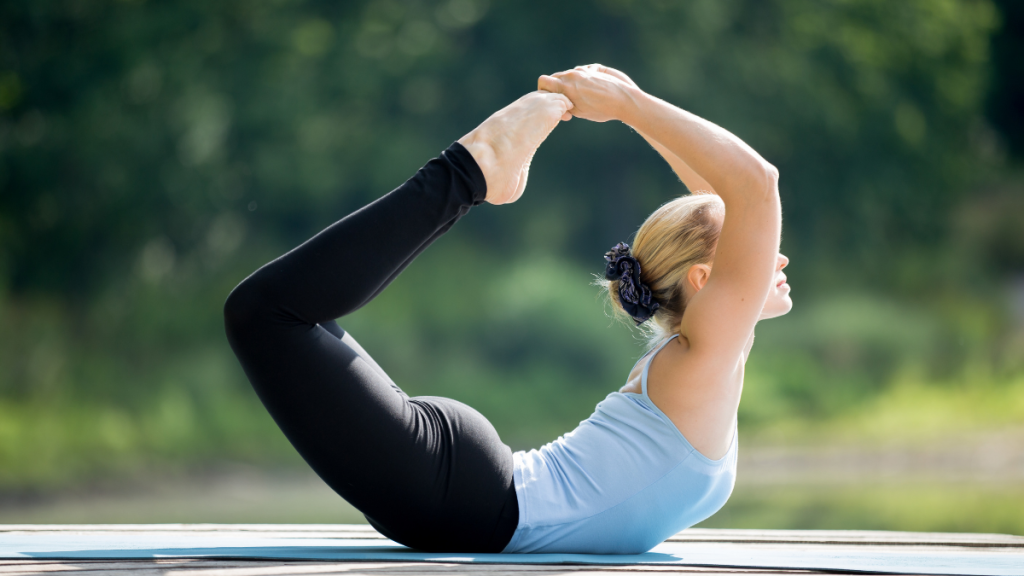
Lying on your back, raise one leg, take the big toe with your hand, and straighten the leg, as far as you can. The hamstring, calf muscles and lower back are super with Supta Padangusthasana.
17. Supine Eagle Twist (Supta Garudasana)

Bring one leg forward over the other thigh, and both legs forward to the side to Supta Garudasana. This is a sophisticated rotation that involves hips and spine.
18. Reclining Hand-to-Big-Toe Pose (Supta Padangusthasana)

To provide support, first put a strap or towel around the arch of your extended foot. Relax then lie back and bring the leg into the Reclining Hand-to-Big-Toe Pose which intensifies the pull in the hamstrings and hip flexors.
19. Reclining Goddess Pose (Supta Baddha Konasana)

Baddha Konasana is when the practitioners lie down and the soles of their feet are in contact with each other and the knees are open. The shape of this butterfly creates a deep stretch of the inner thighs and opens the hips.
Explore More:- Best Advanced Backbend Yoga Poses
Prone vs. Supine Asanas
The primary distinction between prone and supine asana is the location of the practitioner. Prone asanas is a position that is conducted on your stomach and this is useful in tightening your back muscles and making you flexible. Supine poses are those that are performed with your back to the ground, and they are mostly meant to bring relaxation and rest.
Supine Yoga Poses for Beginners
Amateurs can attempt lying down positions such as Savasana Supta Baddha Konasana and Viparita Karani without much difficulty and They do not need high-degree of flexibility and strength and can be fitted with cushions or bolsters to provide additional support.
Incorporating at least these poses into your personal routine will allow you to experience physical and mental renewal in a good starting point of surge to a complete yoga experience.
Encouraging Readers to Incorporate these Poses into their Practice
We ask you to incorporate these 20 supine yoga postures in your daily routine to have a better relaxation and mindfulness experience. Everybody is different therefore you have to listen to your body’s needs during its practice.
In case you want to have a more enriching yoga experience you can visit the Yoga Teacher Training Course in Aatm Yogashala in Rishikesh. This is a famous school with a life-changing experience of inner personal exploration and education amidst the peaceful Himalayas.
This guide will hopefully encourage you to practice the power of supine yoga to achieve mindfulness and relaxation. You know you are ready to take your practice to the next level then book a course at Aatm Yogashala. You will get to know the poses, customs and philosophies of this ancient practice.
Conclusion
At the end of our session we experience the profound advantages of supine yoga positions. We danced a breathing and running dance in the peaceful atmosphere of Aatm Yogashala. This has assisted us to get the stress off and shift into a more conscious position.
Both poses can bring serenity and calmness to our bodies and guarantee us a post-mat harmony. It is a favor to oneself- a holy time to rejoice in your well-being. Take the peace and tranquility that you have found here with you throughout the day. Do not forget–we shall ever have the door open to you to come back, rejoin, and renew.
Frequently Asked Questions
Can I practice supine yoga poses if I’m a beginner?
Absolutely. The poses in supine are meant to accommodate all individuals including beginners and physically challenged individuals. Adapt the variations to your requirements. Begin with ease and pay attention to your body so that the difficulty level can be gradually raised as you will feel more confident with the postures.
How long should I hold each supine yoga pose?
The duration of time you spend in each of the poses will be based on comfort and time availability. The intention is to sustain each pose by a minimum of 5-10 slow and deep breaths. This assists your body to completely relax in order to enjoy the full benefits of the stretch.
Do I need special equipment to practice these poses?
No special equipment is necessary, however a yoga mat, strap and bolster will help augment your practice particularly the support of the body in more challenging stretches and more protracted holds.
Are there any contraindications for supine yoga poses?
The poses of supine yoga are normally harmless. Nevertheless, when you are injured recently or had a severe injury or have a herniated disc or have high blood pressure, be careful with them. In case of any concerns it is better to address a doctor or a licensed yoga teacher.
How do supine yoga poses improve mindfulness?
Supine rests, make your body rest. This is capable of shutting down the mind and aiding mindfulness. You will know your inner self, your feelings, and thoughts as the mind-body connection becomes stronger. To have a transformational experience in person contact Aatm Yogashala. Make the initial step to a rich yogic way of life.


